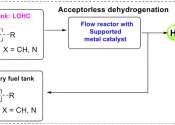Eyes are on plant in Iceland with carbon removal solution by direct air capture
(Tech Xplore)—Carbon reduction is one part of the battle as countries and organizations do their bit to save our planet. Another goal drawing considerable interest now is carbon removal.









